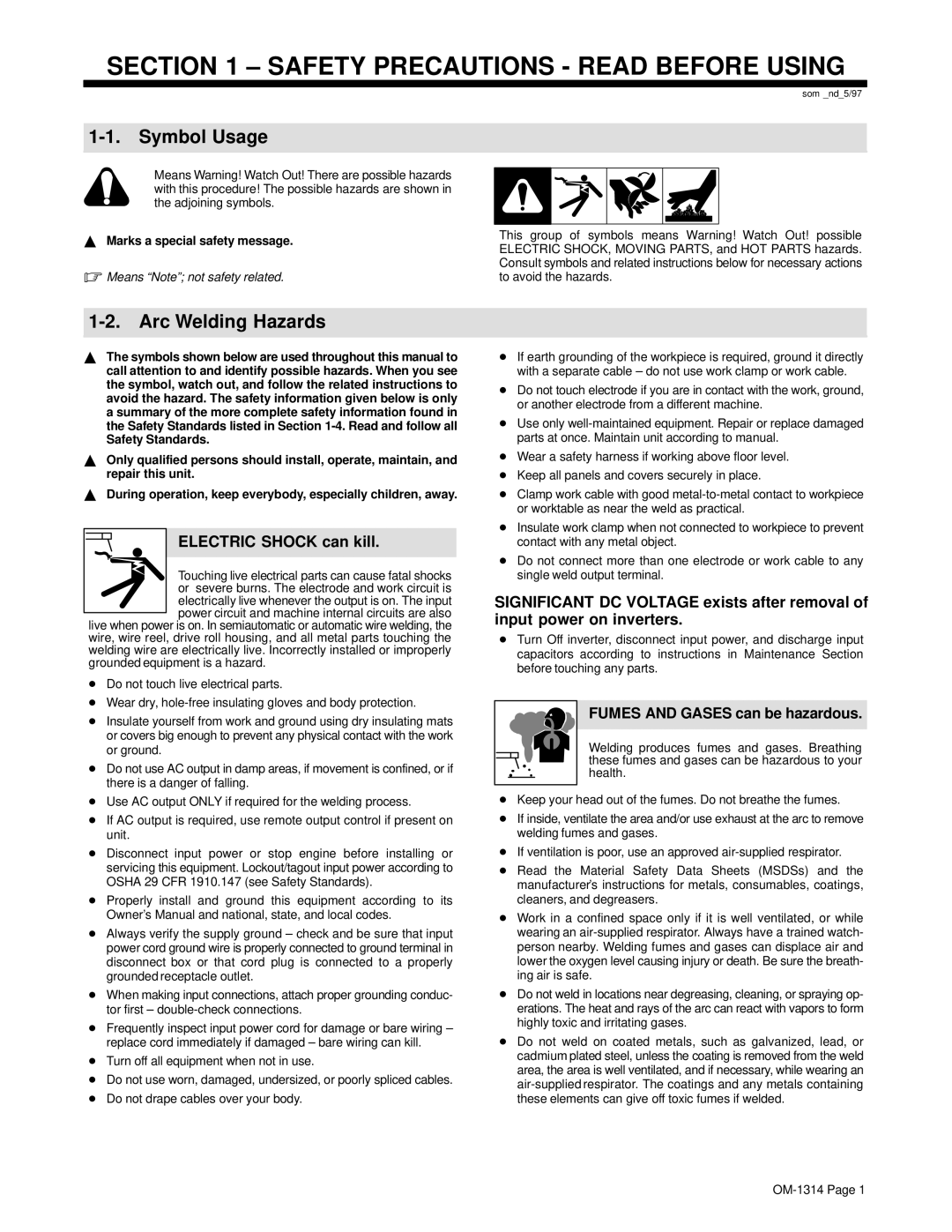M-15 specifications
Miller Electric M-15 is a highly regarded welding machine designed to cater to a variety of welding applications in both industrial and commercial environments. Known for its reliability and efficiency, the M-15 stands out in the Miller Electric lineup due to its impressive performance and user-friendly features.One of the primary characteristics of the M-15 is its versatility. It supports multiple welding processes, including MIG, TIG, and Stick welding. This multi-process capability allows operators to switch between different techniques without needing to change equipment, making it an ideal choice for fabricators and maintenance professionals who handle various welding tasks.
The M-15 is engineered with advanced inverter technology, which enhances its performance and efficiency. This technology allows for a lightweight design while still delivering powerful output. The machine offers a wide range of amperage, making it suitable for welding thin materials as well as thicker sections. As a result, the M-15 can tackle everything from delicate sheet metal projects to robust structural welds.
Another standout feature is its intuitive control panel, which simplifies operation for both novice and experienced welders. The easy-to-read display provides essential information regarding settings and performance, allowing users to make adjustments on the fly. This user-friendly interface minimizes the learning curve and maximizes productivity in the workshop.
In terms of safety, the Miller Electric M-15 incorporates several features designed to protect users during operation. Its built-in thermal overload protection automatically shuts down the machine in case of overheating, thus preventing damage to the equipment and ensuring the safety of the operator.
Durability is also a hallmark of the M-15. Constructed with high-quality materials, this welding machine is built to withstand the rigors of daily use in demanding environments. The housing is designed to protect internal components from dust, debris, and accidental impacts, ensuring consistent performance over time.
Overall, the Miller Electric M-15 combines advanced technology, versatility, and reliability into a compact and powerful welding machine. Its user-friendly design, safety features, and robust construction make it a top choice for professionals looking to invest in a reliable welding solution. Whether for heavy industrial applications or lighter fabrication work, the M-15 is equipped to meet a wide range of welding challenges with confidence.

